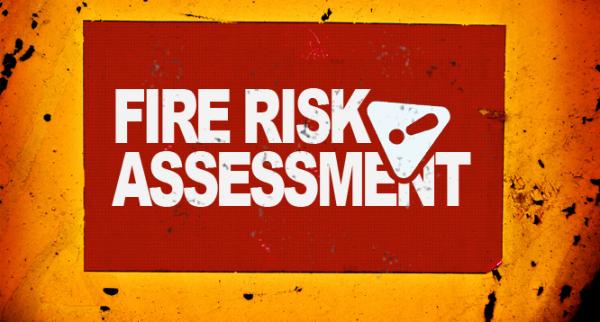Top Tips on How to Avoid Common Workplace Injuries
After nearly 18 months of working from home, offices across the UK are now back open for business. Many are looking forward to catching up with colleagues and resume...
Read Full Article
The fire safety risk assessment – to review or not to review? The Regulatory Reform (Fire Safety) Order 2005 (FSO) and equivalent legislation in Scotland and Northern Ireland imposes a legal requirement to undertake a fire risk assessment. However, the requirement to also keep that assessment regularly up-to-date should not be overlooked, writes Rod Hunt, our legal expert.
The question for duty holders?
This legal requirement can often trigger two questions in the minds of duty-holders: When does a risk assessment cease to be valid? What is the definition of ‘regularly reviewed?
When does a risk assessment cease to be valid?
The first question is relatively easy to answer. In short, the fire risk assessment is likely to cease to be valid when: An incident occurs; a material alteration, for example, to the building structure, takes place; a significant change occurs in the ‘given’ factors that were taken into account when the fire risk assessment was first carried out; a significant change in the fire precautions occurs.
How is ‘regularly reviewed’ defined?
Turning then to the second question, how often is ‘regular’? There is no correct or incorrect frequency for the regular review of the fire risk assessment. This is a matter for the judgement of the fire risk assessor and will likely depend upon the context of the organisation concerned. Successful governance of fire risk does mean keeping an eye on cost proportionality, whilst identifying the general fire precautions one needs to take. This is indeed the very essence of ‘risk assessment’. Since the FSO came into force over eight years ago, fire risk assessment programmes have evolved. However, organisations are typically still following a straightforward fire risk assessment programme whereby a new risk assessment is undertaken on a cyclical basis, very often annually. Whilst this is a perfectly acceptable method of satisfying the legal obligation of undertaking suitable and sufficient fire risk assessments, it must be recognised that it is also a legal requirement to keep a fire risk assessment under review or up to date. Therefore, merely undertaking new assessments each year may not ensure full compliance with the legal requirement unless consideration is also given to the extent to which the original action plan has been implemented.
An alternative system would be to follow a risk assessment and review programme. This can also be undertaken annually but the difference is that the pattern of reoccurrences consists of full fire risk assessment (as above) in year one followed by fire risk assessment reviews in year two.
Ultimately however, the type of fire risk assessment programme chosen by an organisation will be dependent on a host of variables and it is therefore not easy to suggest ‘best practice’ on a sector by sector basis. This decision is best made by the organisation in partnership with whoever is undertaking their assessments, bearing in mind the above considerations.
Can the programme of review be extended?
Organisations seeking to extend the time period between cyclical fire risk assessment programmes are strongly advised to formulate a formal proposal and then put this to their local Fire Enforcing Authority. Whilst there is no statutory duty to consult the Fire Authority, it would be a sensible move and perhaps provide some additional assurance if they confirm they are happy with the proposal. Alternatively, a business could consider entering into a Primary Authority Scheme with their chosen Fire Authority. The scheme allows businesses operating across more than one geographic area to form a partnership with a single Fire Authority, providing access to assured advice on compliance which must be respected by other local regulators. This would not only improve the chances of Fire Authorities being able to offer ‘assured advice’ but would be a clear demonstration to wider stakeholders that the organisation takes excellence in fire risk management seriously.
The Primary Authority Scheme initiative would also be very beneficial for organisations operating a portfolio of buildings spread across different Fire and Rescue Service geographic boundaries.
Beware of competent consultants
It should be borne in mind that many competent consultants are reluctant to visit a building and merely undertake a review of the previous assessment if it was undertaken by someone outside their organisation. Whilst they may therefore be commissioned to undertake a review, many simply undertake a new fire risk assessment. The scope of their instruction and the assessment ultimately produced should therefore be carefully checked.
Conclusion
The requirements placed on Duty Holders in respect of fire risk assessment are unlikely to reduce any time soon. Businesses would therefore be wise to consider how the process is best managed rather than simply spending large sums of money year after year, fire risk assessing the same portfolio of buildings. This may even enable the organisation to re-direct resources to where they can make the greatest contribution to fire safety.
If you would like further information on any issue raised in this update, contact Rod Hunt.
Rod Hunt
Partner
T: +44 (0)161 240 1610
E: rod.hunt@clydeco.com
Clyde & Co
Chancery Place
50 Brown Street
Manchester M2 2JT
T: +44 (0)161 829 6400
F: +44 (0)161 829 6401
Further advice should be taken before relying on the contents of this summary.
Image: Copyright © MG Fire Safety Group (UK): www.mgfiresafetygroup.co.uk
Article written by Rod Hunt | Published 21 November 2014
After nearly 18 months of working from home, offices across the UK are now back open for business. Many are looking forward to catching up with colleagues and resume...
Read Full ArticlePolice, the London Ambulance Service, the Fire Brigade and eventually the London Air Ambulance were called to an explosion at a building site on Thursday 16 in...
Read Full Article